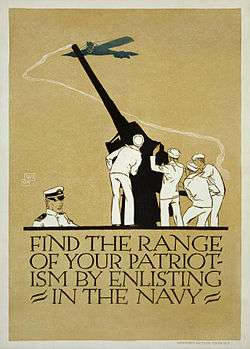Vojtěch Preissig
| Vojtěch Preissig | |
|---|---|
.jpg) | |
| Born |
31 July 1873 Světec, Austria-Hungary (now in the Czech Republic) |
| Died |
11 June 1944 (aged 70) Dachau, Germany |
| Nationality | Czech |
| Known for | Painting |
Vojtěch Preissig (31 July 1873 – 11 June 1944)[1][2] was a Czech typographer, printmaker, designer, illustrator, painter and teacher. He studied in Prague at the School of Applied Industrial Art (in Friedrich Ohmann's Decorative Architecture workshop)[1][2] from 1892 to 1896 and at the School of Decorative Architecture from 1897 to 1898.[3]
Life


Vojtěch Preissig was born on 31 July 1873 in Světec, northern Bohemia.[1][2] His father was a mining engineer.[5] In 1884 he moved to Prague[5] where he studied at the School of Applied Industrial Art from 1892 to 1896, then at the School of Decorative Architecture from 1897 to 1898.[1] In 1897 he moved to Paris and worked for two years with the Czech Art Nouveau artist, Alphonse Mucha.[6] His early, Secessionist, work was influenced by Japanese art and Symbolism. He returned to Prague in 1903 where he founded the periodical Česká grafika ("Czech Graphics"),[1] published the book Barevný lept a barevná rytina ("Color Etchings and Color Engravings") in 1909[1][2] and opened his own graphics studio in 1905. Unfortunately, the graphics studio was not a financial success so he moved to the United States in 1910 and worked as an art instructor. Preissig remained in the United States until 1930.[7] He taught at Columbia University and the Art Students League of New York starting in 1912,[8] then moved to Boston by 1916 and taught a course in graphic arts for the Wentworth Institute.[9] He became the director of the School of Printing and Graphic Arts, until 1926.[8] During his time with the Wentworth Institute he designed recruitment posters for the United States armed forces of World War I, which were principally aimed at Czech immigrants.[10]
Membership in Czech resistance
Preissig, along with his daughter Irena Bernášková, supported the Czech resistance during both World Wars and was arrested in 1940 for doing graphic design work for one of the most important magazines of the resistance, called V boj ("Into the Fight"), that had been outlawed by German authorities. He died on 11 June 1944 in Dachau concentration camp.[1][11]
Work
During World War I he designed recruitment posters for the United States armed forces, which were mainly directed at Czech immigrants.[10] Preissig's work with book design and font design originated from a need for better printing type in the Czech language. Czech printers had traditionally used German typefaces and added additional diacritical marks as needed.
Preissig Antiqua
Preissig's work with typefaces began by creating Preissig Antiqua typeface.[12][13][14] Preissig created 'Preissig Antiqua' roughly around the early 20th Century that would influence the style of print and type designs not only in Czechoslovakia, but also all over Europe in general.[15]
Tributes and Awards
- The Czech government has commemorated Vojtěch Preissig by issuing stamps that feature his work in 1988, 1994 and 1998.[16]
- In 1992, after Preissig's death, he was awarded the Order of Tomáš Garrigue Masaryk, class II.
- In 2008 the United States embassy in Prague held an exhibit of Preissig's work.[17]
References
- 1 2 3 4 5 6 7 "Vojtech Preissig: Information from". Answers.com. 1944-06-11. Retrieved 2013-09-21.
- 1 2 3 4 "Vojtech Preissig". Batz-hausen.de. Retrieved 2013-09-21.
- ↑ Bulletin of Information. Columbia University. p. xii.
- ↑ "Find the range of your patriotism by enlisting in the Navy". Loc.gov. Retrieved 2013-09-21.
- 1 2 Neznámí hrdinové. Strmá cesta Vojtěcha Preissiga. - 26 min (Czech).
- ↑ "Vojtěch Preissig". P22 Type Foundry. Retrieved 2013-09-21.
- ↑ edited by Richard Frucht. (2005). Eastern Europe: An Introduction to the People, Lands, and Culture. 1. Santa Barbara, Calif.: ABC-CLIO. p. 257. ISBN 9781576078006.
- 1 2 "For Our Independence! Get the Killer! For Democracy! The Czechoslovak Army". World Digital Library. 1918. Retrieved 2013-10-27.
- ↑ School arts. 16. Davis Press. 1916. p. 314.
- 1 2 Art world. 3. Kalon. 1918. p. 358.
- ↑ Sayer, Derek (2000). The Coasts of Bohemia: A Czech History. Princeton, New Jersey: Princeton University Press. p. 235. ISBN 9780691050522.
- ↑ "Face the Nation : Vojtech Preissig's Types for Czech Alphabets:". University of St. Thomas, Minnesota Center for Book Arts. Retrieved 1 January 2010.
- ↑ Howard, Jeremy (1996). Art nouveau: international and national styles in Europe. Manchester University Press. p. 88. ISBN 9780719041617.
- ↑ Holme, Charles; Bernard Henry Newdigate; Douglas Cockerell; Ludwig Deubner; E. A. Taylor; A. S. Levetus; August Brunius; William Dana Orcutt (1914). Charles Holme, ed. The art of the book: a review of some recent European and American work in typography, page decoration & binding. "The Studio" ltd. p. 207.
- ↑ "Vojtěch Preissig's types for Czech alphabets." University of St. Thomas – A private, Catholic liberal arts university in Minnesota — University of St. Thomas : Home. N.p., n.d. Web. 5 December 2011.
- ↑ "Vojtech Preissig - Manhattan". Artoftheprint.com. Retrieved 2013-09-21.
- ↑ "Celebrating Common Bonds - Exhibition of Vojtech Preissig". U.S. Department of State. 17 September 2008. Retrieved 1 January 2010.
External links
| Wikimedia Commons has media related to Vojtěch Preissig. |
- Postcards and Stamps by Vojtěch Preissig.
- Digitization of Preissig Antiqua, Preissig Antikva Pro.